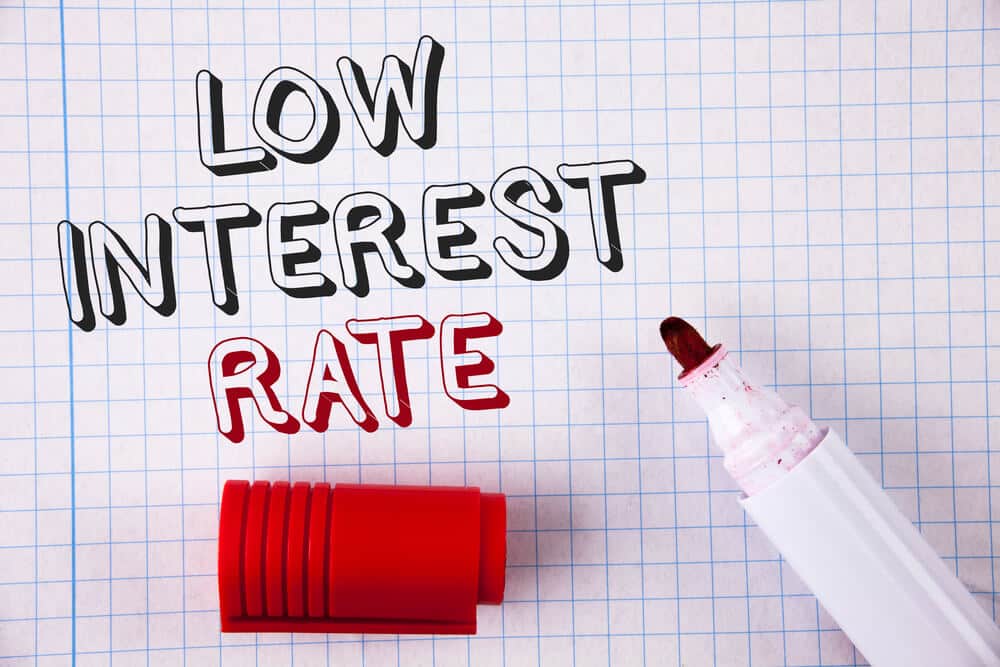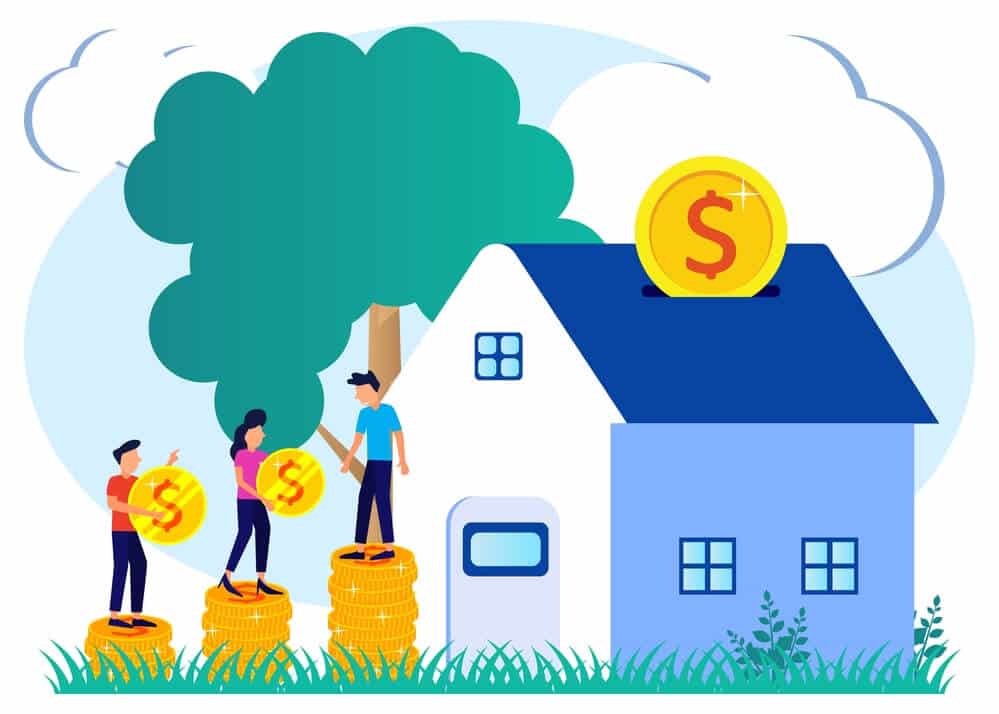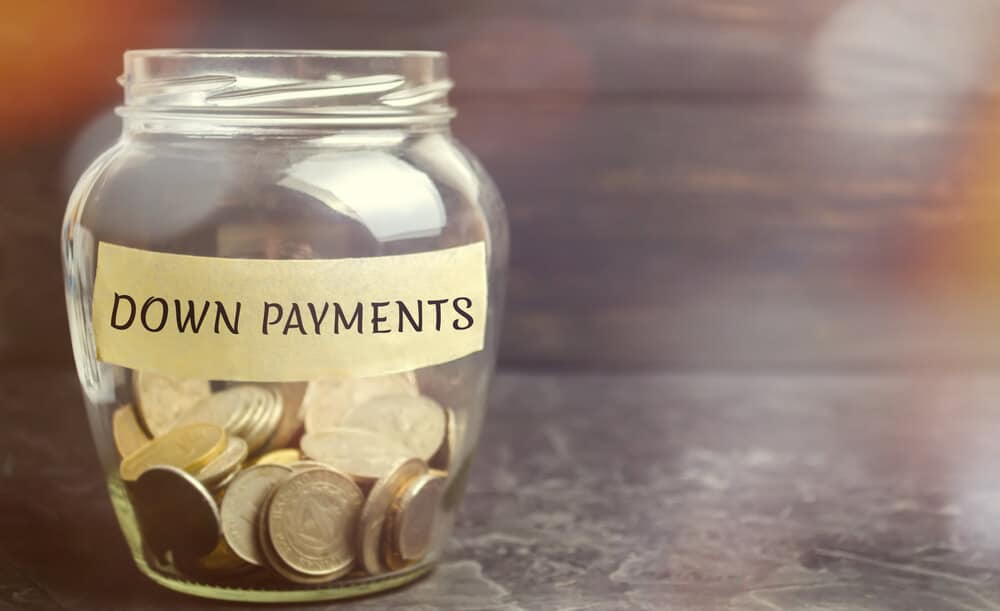So, you are ready to buy a house, but you are not sure if you have enough budget for a down payment. It can be challenging to save for a down payment, but it should not stop you from making your dream come true of owning a house.
There are options for low down payment mortgages. What’s better, there are no down-payment home loans that you can apply for.
Low Down Payment Programs
A down payment can be one of the biggest obstacles that you need to hurdle when you purchase a house.
It could spell the difference between being able to purchase a home at the moment or if you will need to wait until you have more money.
What is a low down payment mortgage?
If you are required to pay a down payment, which is the portion of your home’s purchase price that you pay upfront at an amount of less than 20%, that is a low down payment mortgage.
It is an attractive sales point because it gives borrowers who have limited resources to save their remaining assets for incidentals and other expenses.
Here are 4 low down payment mortgages:
1. FHA Loan
These loans are backed by the Federal Housing Administration. They are available for as little as 3.5% down payment if you have a credit score of at least 580. The down payment remains low at 10% if you have a lower credit score of 500-579.
When you apply for an FHA loan, you may expect to pay other costs like upfront mortgage insurance premium and mortgage insurance throughout the life of the loan. The FHA mortgage insurance will be included in your monthly payments and the cost of your loan.
FHA loans are government-insured offered by private mortgage lenders, so the lenders provide the criteria which you will have to qualify for to be approved for the loan.
One good thing about the FHA loan, however, is that if you have a low credit score today, you can consider refinancing into a conventional loan once your credit score improves.
2. Fannie Mae HomeReady Loans
Many mortgage lenders offer the Fannie Mae HomeReady mortgage. This mortgage is backed by Fannie May, a government-sponsored enterprise (GSE).
If you apply for a HomeReady loan, you will be required to pay only a 3% down payment. This amount is typically afforded by many home buyers and is much lower than other types of conventional loans.
3. Freddie Mac Home Possible Mortgage Program
Home Possible is backed by Freddie Mac and is similar to the HomeReady program. The required down payment is only 3%. Mortgage insurance is required with this loan but at a potentially lower rate.
If you have limited savings for a down payment and a lower credit score, you can enjoy the credit flexibility of this type of mortgage.
4. Conventional 97 Mortgage
This is another government-sponsored enterprise program, which you can avail of from Fannie Mae and Freddie Mac. Similar to HomeReady loans and the Home Possible program, it requires only a 3% down payment.
Your down payment can come from gifted funds from your family and relatives. You will also need to pay for mortgage insurance when you secure this type of home loan.

5. Piggyback loan
When you take a piggyback loan, you need to take two separate loans:
- Conventional mortgage for 80% of the home’s value, enough to eliminate the need to pay mortgage insurance
- 10% of the home’s value, which will allow you to pay the remaining 10% down payment
The eligibility requirements will depend on the lender. The disadvantage of this type of loan is that you are going to pay for two mortgages.
Hence, you will also pay two closing costs. This can reduce the savings you were hoping to get because you are paying supposedly only for a low down payment. Moreover, the second loan is expected to have a higher interest rate, which can be burdensome.
6. Good Neighbor Next Door Program
The GNND is a special program offered to borrowers who work in select public service professions and who are planning to buy a home in a qualifying area.
It is a loan sponsored by the U.S. Department of Housing and Urban Development. If you are qualified, you will be given a discount of up to 50% on a home.
The down payment is only $100. You will need to qualify for a first mortgage and the discounted portion of the home will be in the form of another loan.
If you are consistent in meeting the program requirements, you will not need to repay the second mortgage.
7. Sweat Equity Programs
With sweat equity programs, you “earn” your down payment while you help build your home and contribute to building other homes. Sweat equity refers to home renovations and repairs that you complete in place of a cash down payment.
It can cover 100% of closing costs and down payment as long as the seller will allow you to work on the house before you purchase it.
These programs aim to help homebuyers who do not have funds for a down payment.
They are typically run by non – profit organizations similar to Habitat for Humanity and other local housing entities. You can check your local area how sweat equity is being done so that your down payment will be reduced.
Zero Down Payment Programs or No Down Payment Mortgage No PMI
If you are wondering how to purchase a house with no money down, you will want to consider the no-down-payment mortgage programs offered. These loans are also called “zero-down mortgages” and they don’t require a down payment for you to buy a home.
These loans allow you to purchase a home with no down payment or mortgage insurance. They include fees that cover the cost of foreclosure in case you default on the mortgage loan.
There are just two major loan programs that do not require a down payment, which fits the category of no down payment for first-time homebuyers.
The first time home buyers with zero down programs are:
1. USDA Loan (100% financing)
This loan is also known as the ‘Rural Housing Loan’. It is offered by the U.S. Department of Agriculture with 100% financing.
It is available to homebuyers in suburban and rural neighborhoods. The goal of this program is to help “low-to-moderate income buyers” where they are located.
The key benefits of a USDA loan include:
- No down payment required
- No maximum home purchase price
- below=market interest rates
- The upfront guarantee fee can be added to the loan balance at closing
- Monthly mortgage insurance fees are cheaper than for FHA
To buy a house with a USDA loan without a downpayment, you will need to:
- Prove the total income of all adults in your home is at or below the USDA limits
- Have a credit score of 640 or provide lender-requested evidence of how well you have managed your credit.
If your credit score is lower, you will need to undergo a more rigorous underwriting process.
If you don’t have a credit score or if you have a limited credit history, you can still qualify for a USDA loan with nontraditional credit information like rental and utility payments.
- Prove your total DTI ratio is 41% or less of your gross income
- Buy a primary residence in a designated USDA rural area
2. VA Loan (100% financing)
You can avail of the VA loan with no down payment required if you are a member of the U.S. military, a veteran, or a qualified surviving spouse. This loan is backed by the U.S. Department of Veteran Affairs, which means that it has lower rates and more lenient requirements as long as you meet VA mortgage guidelines.
Those who are eligible for a VA loan are veterans, active-duty service members, and honorably discharged service personnel.
Homebuyers who have spent at least 6 years in the Reserves or National Guard are also eligible for a VA loan. Including spouses of service members who were killed in the line of duty.
Key benefits of the VA loan include:
- No down payment required
- Flexible credit score minimums
- Below-market mortgage rates
- Bankruptcy and other derogatory credit information do not immediately disqualify a borrower.
- No mortgage insurance is required, only a one-time funding fee which can be included in the loan amount.
- No maximum loan amount. You can get a VA loan above current conforming loan limits as long as you have strong credit, and you can afford the payments.
Both the USDA and VA loans do not require private mortgage insurance (PMI), which is being avoided by most homebuyers because it costs money.
Hence, for those qualified or eligible for these loans, they get the benefit of a no down payment mortgage with no PMI.
Down Payment Assistance
Local state and local housing finance agencies offer down payment assistance for low- to moderate-income borrowers with limited resources to purchase a home. There are generally minimum mortgage requirements and other specific requirements for low down mortgages and no down payment mortgage programs.
The typical features of down payment assistance are:
- Income limits
- Targeted neighborhoods
- Profession-based programs
- Recent homeowner restrictions
- Restrictions on how long you own your home
Many loan assistance programs are offered locally, so you can ask your state or municipal housing authority for more information so that you can explore your options.
Some companies and professional organizations also offer down payment assistance. So, you can check with your employer.

Pros and Cons of Buying a House with Low Down Payment
Bankrate lists the pros of paying a low down payment when you purchase a house:
- Stop renting sooner
- Start building home equity now
- Maintain more cash in your reserves
- No mortgage insurance requirement
- A lower borrowing amount means lower interest total over the life of the loan
- Potential for lower monthly payments
- Will qualify for better interest rates
When you don’t have a substantial amount of money to pay a down payment for the house you are purchasing, buying a house with a low down payment or no down payment can make it easier to close a deal.
It will also be easier to take advantage of a good deal or a dip in the real estate market when you are able to purchase a home with a low down payment.
You will not need to wait or spend time saving money for a down payment.
When you pay a lower amount for down, you can save the extra money for remodeling or repairing or for some other worthy goal you need to spend money on.
Low down payment mortgages and no down payment mortgages give you extra cash that will remain available for times of need.
The cons of paying a low down payment for a house are:
- Mortgage insurance payments
- Potentially higher interest rates
- Will not be able to buy a more expensive property
- A larger loan balance means more interest over the life of the loan
- May drain a large chunk of your savings
- May need more time save enough to hit the 20% marker, which means delaying ownership
The main pain point of low down payment and no down payment mortgages lie in having little to no equity. There will be no funds that you can tap into for cash-out or refinance. You will also expect to pay other expenses like closing costs, inspections, and an appraisal.
So, the money you have saved by not paying a down payment might be needed elsewhere so that you can close the deal on the home you will purchase.
Bottomline
When you consider home loans with little or no down payment, it could either mean you can buy a house sooner or have higher monthly mortgage payments.
It is best to understand the pros and cons and conditions of low down payment purchases before buying your dream home.
Contact us now at Sprint Funding to know more about our services!





